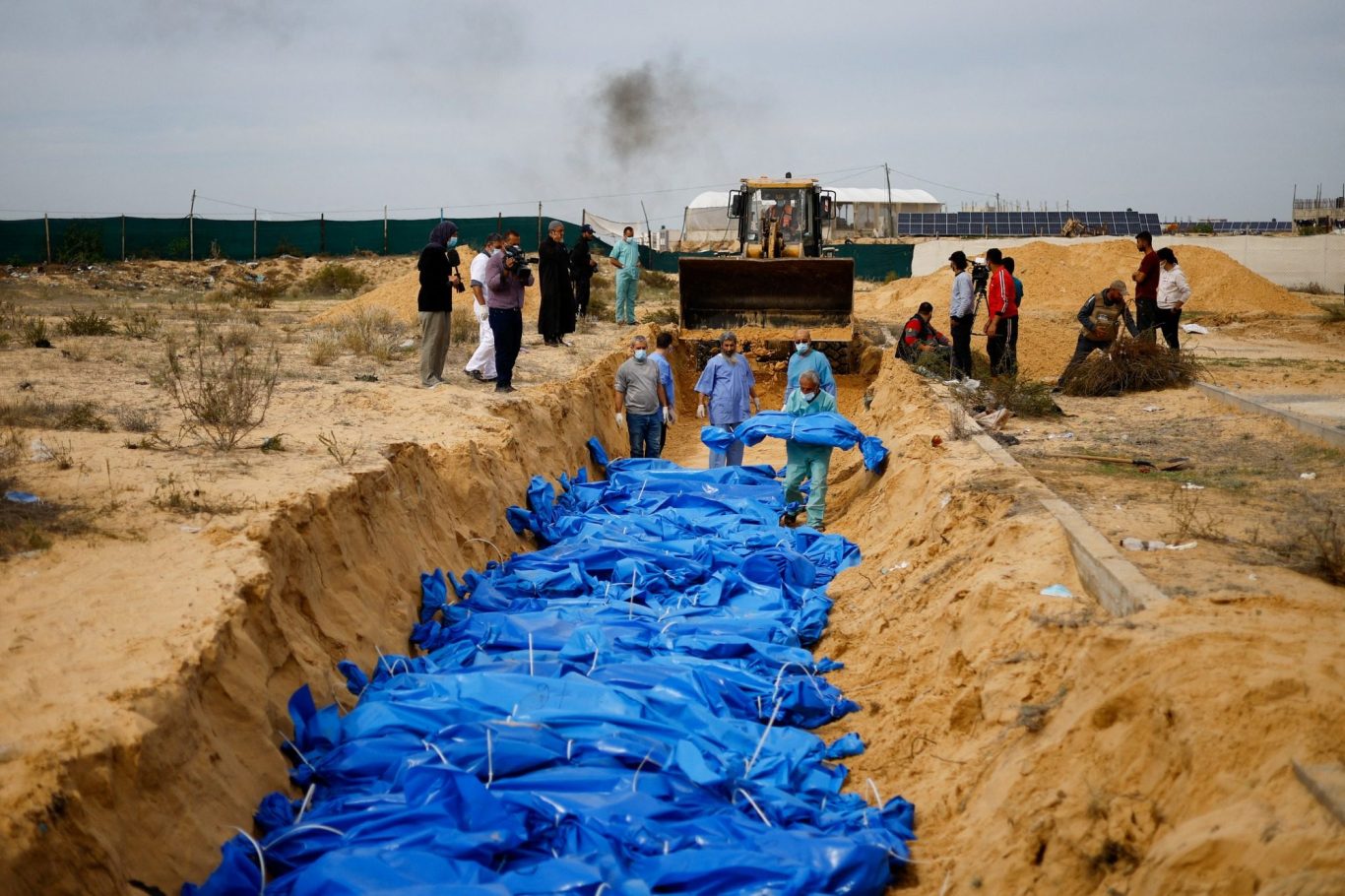CASE PROFILE:
Cumulative Death Toll (Estimate) From 1948
The Palestine-Israel conflict has deep historical roots dating late 19th Century when the rise of the Zionism began. Since the Nakba of 1948, the death toll of Palestinians due to the ongoing Israeli-Palestinian conflict has been substantial. While the exact number is difficult to pinpoint due to the complexity and longevity of the conflict, several estimates have been made regarding the cumulative Palestinian casualties over the years. This is a mere snapshot of the recorded atrocities that have taken place:
The estimated Palestinian death toll from 1948 exceeds 100,000+ civilians and continues to grow each passing day;
1. The Nakba (1948)
- Description: Nakba The Catastrophe marks the 1948 displacement of Palestinians and the establishment of the State of Israel. Over 700,000 Palestinians were forced from their homes, many were killed during the violence of the 1948 Arab-Israeli war.
- Palestinian Deaths: Approximately 10,000–15,000 Palestinians were killed, with the majority being civilians.
2. The Six-Day War (1967)
- Description: The 1967 war led to Israel’s occupation of the West Bank, Gaza and East Jerusalem. It marked a further occupation of Palestinian land and the beginning of decades of military occupation.
- Deaths: Approximately 20,000 Palestinians were killed, both from direct military action and displacement due to the occupation.
3. The First Intifada (1987–1993)
- Description: Al-Intifada Al-Oula The First Uprising was a mass Palestinian uprising against Israeli occupation in the West Bank and Gaza. Involving mass protests from the Palestinians demanding an end to military occupation and their rights to self-determination. In response, Israeli forces used violent repression, including curfews, arrests and the use of live ammunition, leading to significant Palestinian casualties.
- Deaths: Approximately 1,000–1,200 Palestinians were killed due to Israeli military action and clashes.
4. The Second Intifada (2000–2005)
- Description: Al-Aqsa Intifada The Second Uprising was triggered by Ariel Sharon’s visit to the Al-Aqsa Mosque compound. It was characterized by intense violence, including bombings and military strikes by Israel.
- Deaths: Approximately 3,000–5,000 Palestinians were killed, many being civilians caught in Israeli airstrikes and ground operations.
5. The Gaza War (2008–2009)
- Description: Known as The Gaza Massacre [Palestine] Operation Cast Lead [Israel], this operation saw widespread airstrikes and ground invasions by Israel, targeting Gaza’s civilian infrastructure and killing many non-combatants. Israel's illegal use of white phosphorus in densely populated civilian areas was a violation of international law and seen as a deliberate attack that caused horrific burns, fires and deaths, particularly among women and children. Palestinians viewed it as another example of Israel's indiscriminate violence against their people, with no regard for international law. Human rights organizations condemned Israel for targeting civilian areas with such lethal weapons and the use of white phosphorus was seen as an attempt to inflict maximum harm on the Palestinian population.
- Deaths: Approximately 1,400 Palestinians were killed, the majority of whom were civilians.
6. The Gaza Conflict (2012)
- Description: The Pillar of Fire [Palestine] The Pillar of Defence [Israel] operation involved airstrikes aimed at Palestinian militant groups but resulted in numerous civilian casualties. The conflict intensified the ongoing humanitarian crisis in Gaza.
- Deaths: Approximately 160 Palestinians were killed, mostly civilians in airstrikes and military operations.
7. The Gaza War (2014)
- Description: Al-Adhba Al-Ghazawiya The Gaza Tragedy [Palestine] Operation Protective Edge [Israel] was one of the deadliest conflicts in Gaza, with Israeli airstrikes, artillery bombardments and ground invasions leading to massive destruction and a high civilian death toll.
- Deaths: Over 2,100 Palestinians were killed, the majority of whom were civilians. More than 100,000 Palestinians were displaced during the conflict.
8. The Great March of Return Protests (2018-2019)
- Description: Al-Marsad Al-Kabir The Great Return March [Palestine] Operation Great Return March [Israel] was a series of protests by Palestinians demanding their right to return to lands they were displaced from. Israeli forces responded with deadly force, targeting unarmed protesters.
- Deaths: Over 200 Palestinians were killed by Israeli forces during the protests.
9. The Gaza Conflict (2021)
- Description: Al-Saif Al-Quds The Sword of Jerusalem [Palestine] Operation Guardian of the Walls [Israel], this conflict erupted after tensions over the Al-Aqsa Mosque and the Sheikh Jarrah evictions in Jerusalem. Israeli airstrikes targeted Gaza, resulting in mass casualties and destruction.
- Deaths: Approximately 250 Palestinians were killed during the 11-day conflict, with most casualties being civilians.
10. The Israel-Hamas War, Gaza Genocide (2023-2025)
- Description: Al-Mahraqa The Holocaust, Genocide [Palestine] Operation Shield and Sword [Israel] This ongoing conflict began in 2023 and has led to widespread destruction and death in Gaza, with Israel carrying out devastating airstrikes and ground operations. Palestinians view this as an attempt to completely annihilate their communities and cultural heritage.
- Deaths: As of March 2025, over 50,000 Palestinians have been killed in the space of just 3 years, with over 113,000 wounded.
Although the Israeli deaths are significantly less the death toll cannot be confirmed due to Israel having a history of manipulating information.
In conclusion, despite Israeli Prime Minister Benjamin Netanyahu being declared a war criminal by the International Criminal Court (ICC), no arrests or meaningful actions have been taken to hold him accountable. The ongoing conflict is fuelled by substantial Western funding to Israel both financially and militarily, enabling war crimes, including the killing of civilians, journalists, medical workers, innocent women and children, alongside the brutal occupation and blockade of Palestinian territories. Israel's continuous violation of ceasefire agreements further exacerbates the cycle of violence. The international community's failure to act has allowed these atrocities to persist unchecked, urgent action is needed to hold perpetrators accountable, end the violence, and pave the way for a just and lasting peace.
Sources:
The Guardian
Al Jazeera
Palestinian Ministry of Health (MoH)
Reuters
United Nations Office for the Coordination of Humanitarian Affairs (OCHA)
Human Rights Watch
Historical accounts by Ilan Pappé and other historians: For early conflicts and the Nakba.
The history of Palestine, explanatory video:
31 March 2025, Another mass grave discovered, involving 15 missing Humanitarian Workers shot 'in cold blood':
October 2023, Evidence of Israel's illegal use of banned White Phosphorous. Amnesty International says an attack was carried out on the town of Dheira in Lebanon injuring at least nine civilians:

November 2023, Palestinian burials in mass graves as cemeteries overflow:

May 2022, Israeli settlers rushing to occupy Palestinian Homes by force:
CALLING UPON ALL OF HUMANITY
HELP PUT AN END TO THIS MASSACRE TODAY AND SEEK JUSTICE FOR THE INNOCENT MEN, WOMEN AND CHILDREN WHOSE LIVES HAVE BEEN SENSELESSLY TAKEN.
Disclaimer: All information presented on this website is from an independent spectator's standpoint and does not necessarily reflect the views or positions of the ICJP.
© Global195. All rights reserved.
We need your consent to load the translations
We use a third-party service to translate the website content that may collect data about your activity. Please review the details in the privacy policy and accept the service to view the translations.
